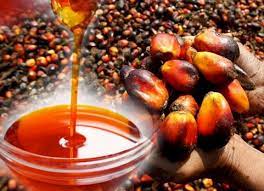International Desk November 18, 2021: The supply of palm oil may not ease before the first quarter of 2022 as an unresolved labor shortage continues in Malaysia while high government duties turn buyers away from larger rival Indonesia, leading edible oil industry analysts said at an S&P Global Platts event Nov. 17.
Pakistan imported one million ton of palm oil during the period from July to October 2021 which worth USD 1.1 billion, according to data published by Pakistan Bureau of Statistics. In quantity, palm oil imports are lower by 3.6 percent but in dollar terms the imports are 71 percent more when compared to imports during the same period last year.
A L S O || R E A D
Indian palm oil imports up 15% in 2020-21, returns to pre-pandemic market share
Pakistan annually imports more than 3 million tons of palm oil to meet the food requirement of 220 million population.
There is a shortage of about 70,000 workers in Malaysia and this is the main reason for shortage of palm oil supply, said Sathia Varqa, founder of Singapore-based Palm Oil Analytics.
“A shortage of workers means reduced harvesting as well as reduced palm planted areas, particularly peninsular Malaysia which has seen a loss of 90,000 hectares and about 10,000 hectares in Sabah [a state in East Malaysia]. So, we are looking at about 100,000 hectares lost from plantations converted to urbanized areas,” Varqa said during a session on day three of the Asia Agriculture Week.
Due to pandemic-related border closures in 2020, foreign workers, who account for about 70% of the workforce at Malaysian oil palm estates, have been unable to reenter the country. Due to this, production in the current year has fallen to an estimated 18.3 million mt from 19.2 million mt in 2020.
“Mills were also shut down due to COVID-19, and fruits left unplucked on the trees are perishable and deteriorate in quality. This has greatly affected the output,” Dorab Mistry, director of Godrej International and a keenly-followed trade observer said during a separate session at the event.
While Malaysian authorities work on a special approval to bring in 32,000 foreign workers, trade sources believe it may take a while before the workers reach the plantations and start the harvesting and replanting work needed to boost production.
“Up to now there is no sign of any structured rapid urgent move to release those work permits and bring in labor from outside,” Mistry said.
“My guess is that we will be well into the first half of the next year by the time this additional labor comes into the scene and that will translate itself into better production only after Ramadan which is around May and the effect will only be felt in the second half of 2022.”
Palm oil is the world’s most produced vegetable oil, and apart from its use as an edible oil, it is used in everything from confectionary, cosmetics, soaps and as feedstock for biodiesel.
This year, labor constraints in Malaysia, a steep decline in canola oil production in Canada due to unfavorable weather, and lower sunflower oil production pushed vegetable oil prices to a 10-year high amid a global bull run in commodity prices.
A new normal for prices
Both Varqa and Mistry don’t see palm oil market prices easing from current levels till March 2022.
Varqa expects crude palm oil, or CPO, active month futures to trend at MR4,700-4,900/mt till December 2021 and rise in January and February 2022 before lowering to MR4,600 ($1,100.2) from March 2022 onwards.
Palm oil futures on the Bursa Malaysia have broken through multiple record-highs in the year, setting a fresh record of MR 5,220/mt ($1,248.51) Oct. 21.
“I don’t see markets anticipating lower prices right now…March onwards when the seasonal trend changes to better production and those work permits are released, prices will go down,” Mistry said.
This scenario is based on normal weather continuing in the growing regions, Mistry added that a developing La-Nina situation could hamper this outlook if it strengthens in the coming months.
“We have now entered a new era of prices. I believe we will not see the lower prices of before last year [pre-2020] again,” Sandeep Bajoria, head of Mumbai-based vegetable oil brokerage Sunvin Group said during the conference.
“Palm oil and soybean oil prices have more than doubled in the last 18 months. For soybean we will have a floor of $900/mt-$950/mt FOB Argentina and for palm oil we will have a floor of $800/mt-$850/mt.” Bajoria said about the coming year.
The industry analysts corroborated that greater production from March 2022 would provide some relief from current high prices but cautioned that soaring fertilizer costs could affect output.
“Fertilizer, which is a third of the cost of production, has gone up in price by 15%-20%, some small holders may not apply as much fertilizer as before,” said Mistry. Varqa said that this would result in a lower yield down the road. While prices seem sufficient to cover fertilizer costs, Mistry said those at risk were the smallholders who were not reaping the full benefits of these prices.
The spot price of crude palm oil at the largest producer and exporter, Indonesia, has risen by 61% in the last year to $1,340/mt Nov. 17, according to Platts assessments. Over the same period, soybean oil prices from the largest exporter, Argentina, have risen by 45% to $1,370.9/mt, while the cost of sunflower oil in Ukraine rose 30.5% to $1,390/mt.










